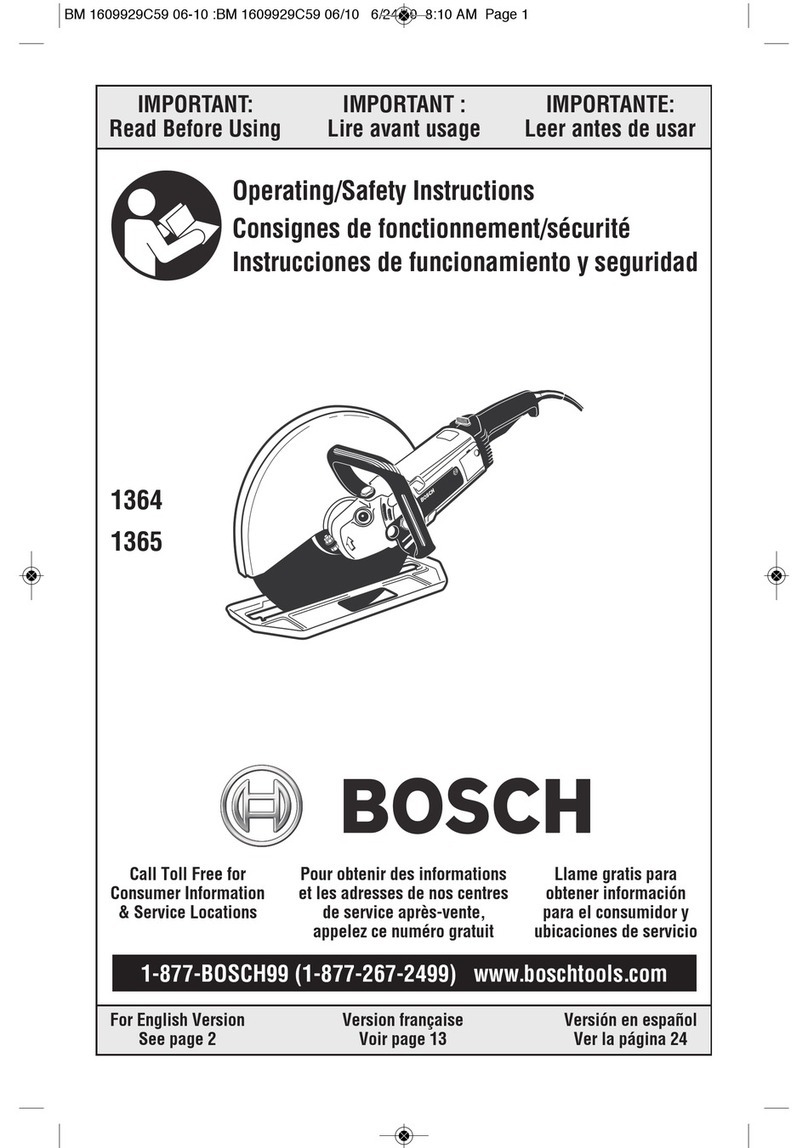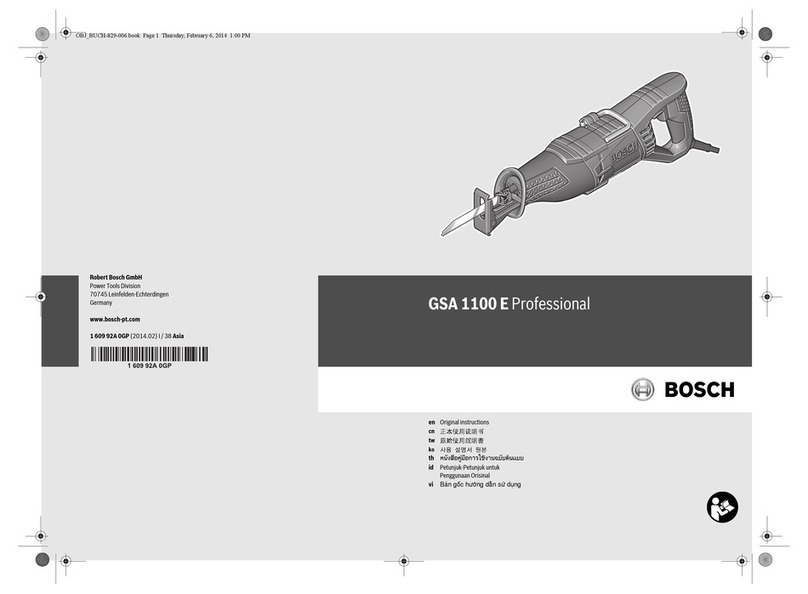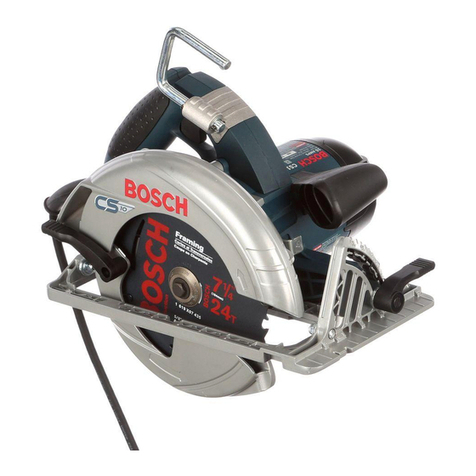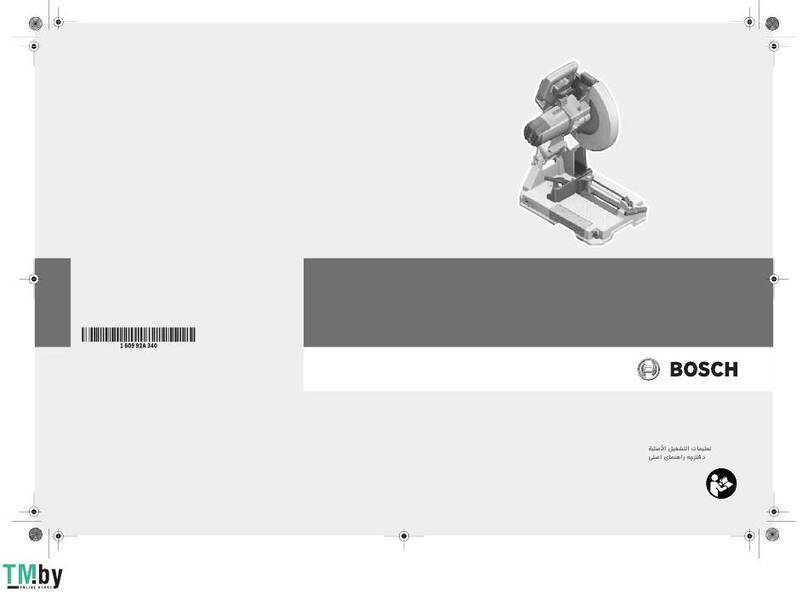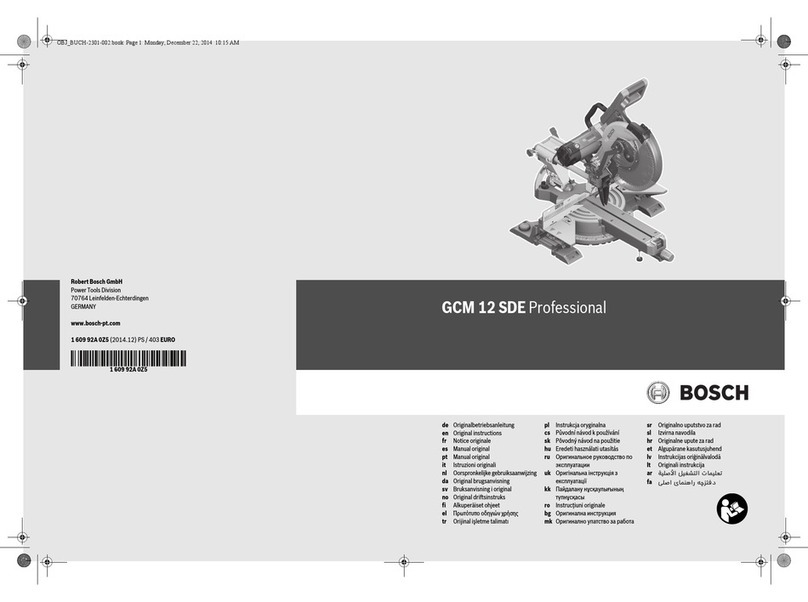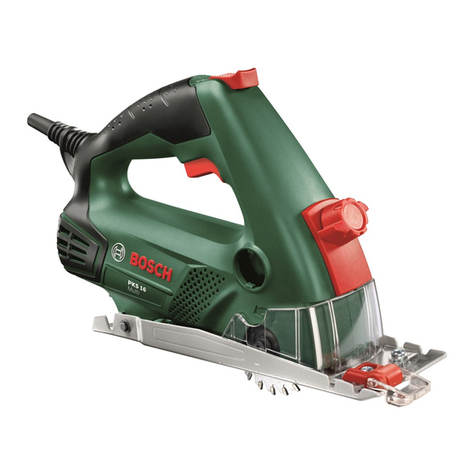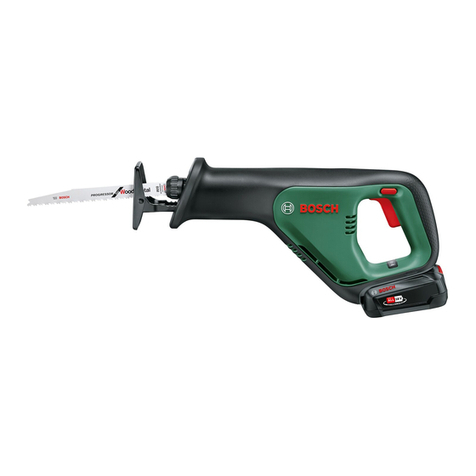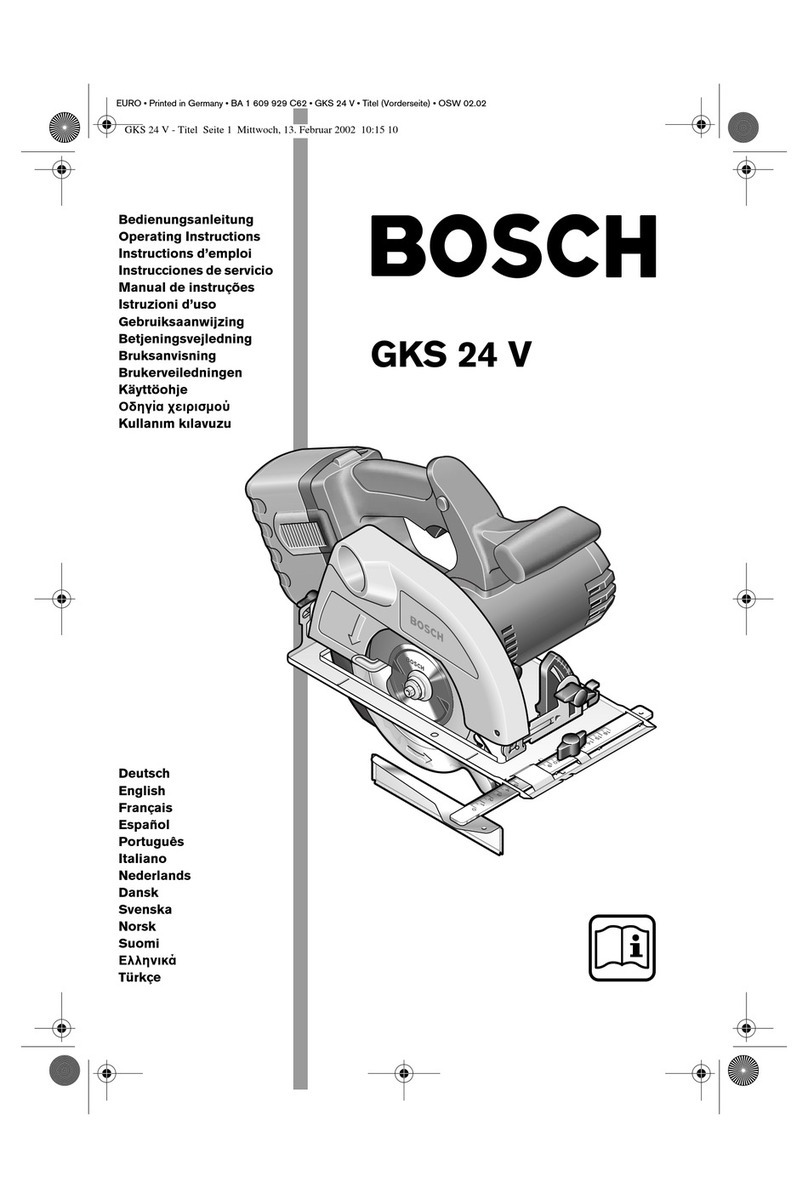English | 17
Bosch Power Tools 1 609 92A 0GB | (11.9.13)
Cut-off machine safety warnings
The guard provided with the tool must be securely at-
tached to the power tool and positioned for maximum
safety, so the least amount of wheel is exposed to-
wards the operator. Position yourself and bystanders
away from the plane of the rotating wheel. The guard
helps to protect operator from broken wheel fragments
and accidental contact with wheel.
Use only diamond cut-off wheels for your power tool.
Just because an accessory can be attached to your power
tool, it does not assure safe operation.
Therated speedof the accessorymust beat least equal
to the maximum speed marked on the power tool. Ac-
cessories running faster than their rated speed can break
and fly apart.
Wheels must be used only for recommended applica-
tions. For example: donot grind with the side of cut-off
wheel.Abrasivecut-offwheelsare intended forperipheral
grinding, side forces applied to these wheels may cause
them to shatter.
Always use undamaged wheel flanges that are of cor-
rect diameter for your selected wheel. Proper wheel
flanges support the wheel thus reducing the possibility of
wheel breakage.
The outside diameter and the thickness of your acces-
sory must be within the capacity rating of your power
tool. Incorrectly sized accessories cannot be adequately
guarded or controlled.
The arbour size of wheels and flanges must properly fit
thespindleof the powertool. Wheels and flanges withar-
bour holesthatdo notmatch themountinghardware ofthe
power tool will run out of balance, vibrate excessively and
may cause loss of control.
Do not use damaged wheels. Before each use, inspect
the wheels for chips and cracks. If power tool or wheel
is dropped, inspect for damage or install an undam-
aged wheel. After inspecting and installing the wheel,
position yourself and bystanders away from the plane
of the rotating wheel and run the power tool at maxi-
mumno loadspeed foroneminute. Damagedwheelswill
normally break apart during this test time.
Wear personal protective equipment. Depending on
application, use face shield, safety goggles or safety
glasses. As appropriate, wear dust mask, hearing pro-
tectors, gloves and shop apron capable of stopping
small abrasive or workpiece fragments. The eye protec-
tion must be capable of stopping flying debris generated
byvariousoperations. Thedustmaskor respiratormustbe
capable of filtrating particles generated by your operation.
Prolonged exposure to high intensity noise may cause
hearing loss.
Keep bystanders a safe distance away from work area.
Anyone entering the work area must wear personal
protective equipment. Fragments of workpiece or of a
broken accessory may fly away and cause injury beyond
immediate area of operation.
Hold the power tool by insulated gripping surfaces on-
ly, when performing an operation where the cutting
accessory may contact hidden wiring or its own cord.
Cutting accessory contacting a “live” wire may make ex-
posed metal parts of the power tool “live” and could give
the operator an electric shock.
Position the cord clear of the spinningaccessory. If you
lose control, thecord maybe cutorsnaggedand yourhand
or arm may be pulled into the spinning wheel.
Never lay the power tool down until the accessory has
come to a complete stop. The spinning wheel may grab
the surface and pull the power tool out of your control.
Do not run the power tool while carrying it at yourside.
Accidental contact with the spinning accessory could snag
your clothing, pulling the accessory into your body.
Regularly clean the power tool’s air vents. The motor’s
fanwill drawthe dustinsidethe housingand excessiveaccu-
mulation of powdered metal may cause electrical hazards.
Do not operate the power tool near flammable materi-
als. Sparks could ignite these materials.
Do not use accessories that require liquid coolants. Us-
ing water or other liquid coolants may result in electrocu-
tion or shock.
Kickback and related warnings
Kickback is a sudden reaction to a pinched or snagged ro-
tating wheel. Pinching or snagging causes rapid stalling of
the rotating wheel which in turn causes the uncontrolled
power tool to be forced in the direction opposite of the
wheel’s rotation at the point of the binding.
For example, if an abrasive wheel is snagged or pinched by
the workpiece, the edge of the wheel that is entering into
the pinch point can dig into the surface of the material
causing the wheel to climb out or kick out. The wheel may
either jump toward or away from the operator, depending
on direction of the wheel’s movement at the point of pinch-
ing. Abrasive wheels may also break under these condi-
tions.
Kickback is the result of power tool misuse and/or incor-
rect operating procedures or conditions and can be avoid-
ed by taking proper precautions as given below.
Maintaina firmgripon thepowertoolandpositionyour
body and arm to allow you to resist kickback forces. Al-
ways use auxiliary handle, if provided, for maximum
control over kickback or torque reaction during
start-up. The operator can control torque reactions or
kickback forces, if proper precautions are taken.
Never place your hand near the rotating accessory. Ac-
cessory may kickback over your hand.
Do not position your body in line with and behind the ro-
tating wheel. When the wheel, at the point of operation, is
moving away from your body, the possible kickback may
propelthe spinningwheel andthepower tooldirectly atyou.
Use special care when working corners, sharp edges,
etc. Avoid bouncing and snagging the accessory. Cor-
ners,sharp edges orbouncing have a tendency to snag the
rotating accessory and cause loss of control or kickback.
Do not attach a saw chain, woodcarving blade, seg-
mented diamond wheel with a peripheral gap greater
OBJ_BUCH-1837-003.book Page 17 Wednesday, September 11, 2013 4:24 PM

